Green beans are basically the unripe fruits with a protective pod, and these can be the cultivars of many common beans (i.e., common bean, runner bean, yardlong bean, and more). The other names for green beans are string beans, French beans, and snap beans. For us, this veggie is very beneficial but can our guinea pigs consume them safely? Let’s find out.
Can guinea pigs eat green beans? Guinea pigs can eat green beans but they should consume green beans only 1-2 times per week to avoid potential problems. It contains many good nutrients and essential vitamins like vitamin C which is extremely important for guinea pigs. Also, remember that the guinea pigs can’t eat cooked food, so the green beans must only be given to them raw and fresh, never cooked.
Read more in the sections below to find out all the nutrients, benefits, and possible risks of green beans as food for guinea pigs.
Table of Content
Are Green Beans Good for Guinea Pigs? | Health Benefits
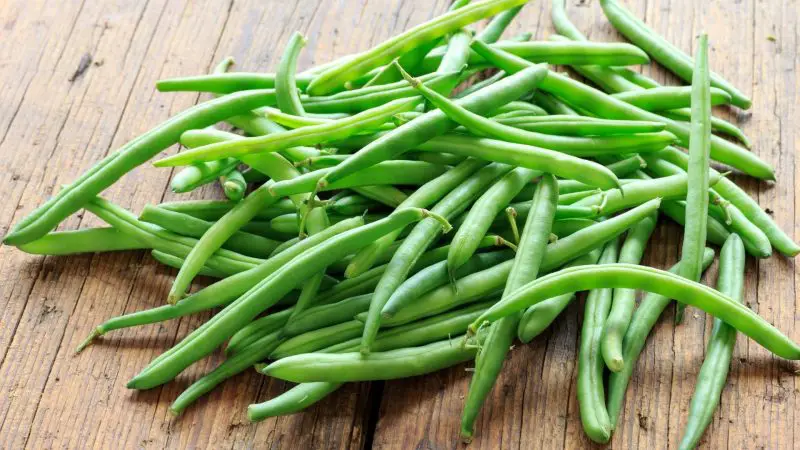
Your guinea pigs can enjoy some of the benefits of green beans. This veggie is very healthy, and most importantly, it contains vitamin C which guinea pigs always need. To know more about its benefit, read the following:
Healthy weight
With green beans, there is no risk of the guinea pig getting chubby or obese. This veggie is low in calories, carbs, proteins, and fats. When all of these nutrients are in small amounts, the weight of your guinea pig will not be affected. However, due to other reasons, the cavy shouldn’t eat too many green beans.
Good digestion
If you feed green beans to the guinea pig in moderate amounts and frequency, the benefit will be good digestion. Green beans have a good amount of fiber. Fibers are good because they work up the bowels and improve digestion. Too much fibers can cause loose stool but lack of fibers causes constipation.
Antioxidants
Green beans will provide your guinea pig with a good amount of antioxidants. The antioxidants are always essential for a healthy organism that will not be prone to diseases, especially dangerous ones. Antioxidants remove the free radicals and the damage they cause (early aging and chronic illnesses). Green beans have vitamin A, manganese, and selenium – the best and strongest antioxidants.
Scurvy prevention
Green beans also have vitamin C. Without this vitamin, the guinea pigs cannot be healthy and they can’t survive either. Naturally, the guinea pigs cannot produce this vitamin, and when they consume it, they cannot store it. It is dangerous for guinea pigs to have a vitamin C deficiency because then they will be prone to the disease scurvy. Some of its symptoms are bleeding, rough coat, discharge, no appetite, weight loss, fatigue, diarrhea.
Healthy blood
With green beans, the cavy will have healthy blood and less risk of anemia. Iron is a mineral found mostly in the red blood cells, and it prevents anemia (weakness, no appetite, frequent health problems, fatigue). And, copper creates new red blood cells.
Nutrition Facts of Green Beans for Guinea Pigs
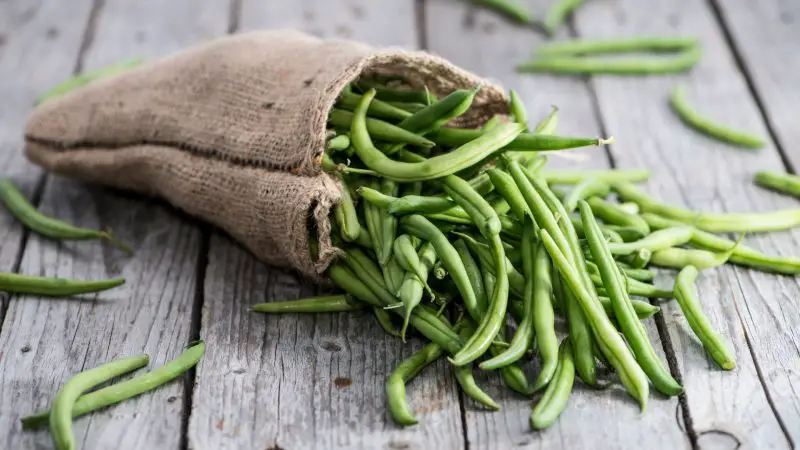
Here are the nutrition facts for 100 g (3 oz) of green beans:
- Low in calories – 31
- Carbs – 7.1g
- Protein – 1.8g
- Fiber – 3.4g
- Sugars – 1.4g
- Low in fat – 0.1g
- Vitamin A – 14%
- Vitamin C – 27%
- Thiamin – 6%
- Vitamin E – 2%
- Vitamin K – 18%
- Riboflavin – 6%
- Niacin – 4%
- Vitamin B6 – 4%
- Folate – 9%
- Pantothenic acid – 1%
- Calcium – 37mg
- Iron – 6%
- Magnesium – 6%
- Phosphorus – 4%
- Potassium – 6%
- Zinc – 2%
- Copper – 3%
- Manganese – 11%
- Selenium – 1%
Risks to Consider When Giving Green Beans to Guinea Pigs
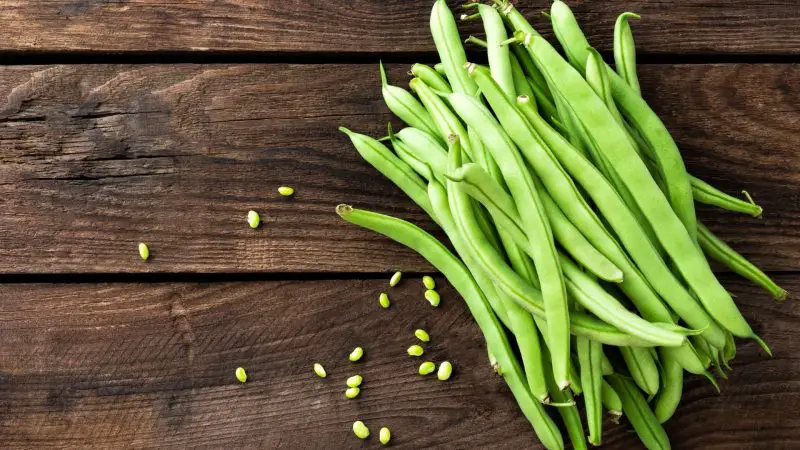
Below are some potential risks of green beans for guinea pigs:
- Urinary problems – Green beans contain calcium and phosphorus, which are not so great for the urinary systems of guinea pigs. Calcium works together with phosphorus to create healthy and strong bone tissues. However, when these minerals are found in excess in the bodies of guinea pigs, there are risks of bladder and kidney stones, painful urinating, bloody urine, or urinary infections. The worst-case scenario is when kidneys stop working, this is called renal failure.
- Digestion problems – Green beans contain some sugar as well. It is good that it’s not in large amounts, but still, it doesn’t mean the guinea pigs can eat limitless amounts of green beans. The stomachs of guinea pigs cannot digest sugars very well, so try to feed them sparingly any food that contains sugars. Too much sugar can cause bloating, cramps, indigestion, or upset stomach. As a result of this, the guinea pigs could get diarrhea.
- Bloating and flatulence – Green beans are naturally a food that causes gassiness. So, keep this in mind when you want to feed your guinea pigs this veggie. Once or twice per week should be the maximum, and not as a large serving as well. More details on this in the section below.
Serving Size, Frequency and Preparation of Green Beans for Guinea Pigs
The serving size is quite minimal. A few green beans are a perfect serving size. You shouldn’t feed green beans to the guinea pig more than 1-2 times per week. So, if you want to avoid bloating, indigestion or gassiness, stick with this rule. Preparation is very easy, rinse them with water and serve them. Or, if the green beans are frozen, thaw them first and then serve them.
Should the Green Beans Be Peeled?
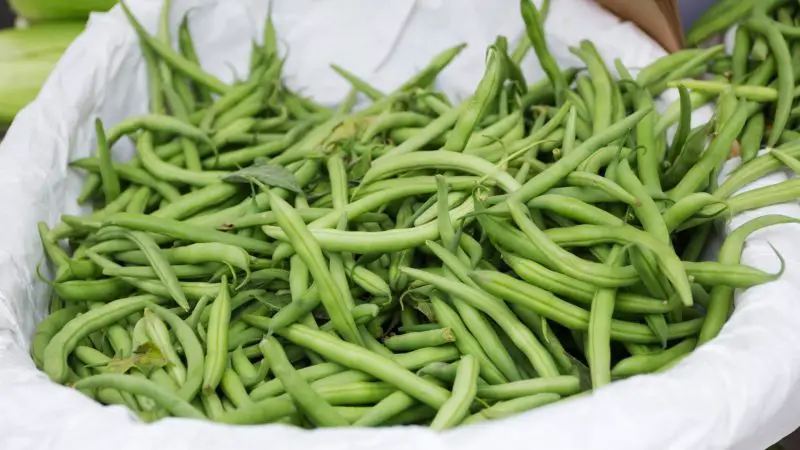
There is no need to peel green beans because they don’t have ‘skin’ that needs to be peeled. In fact, green beans are fully edible as they are, so only rinsing with water is enough.
How to Select Healthy and Fresh Green Beans?
They should be quite firm and when you bend them, they should snap in the middle. You can always peel away the fiber strip that is along the edge, but it is not obligatory. The guinea pigs can consume them either way, as long as they are not cooked.
How to Prepare Green Beans for Your Guinea Pigs?
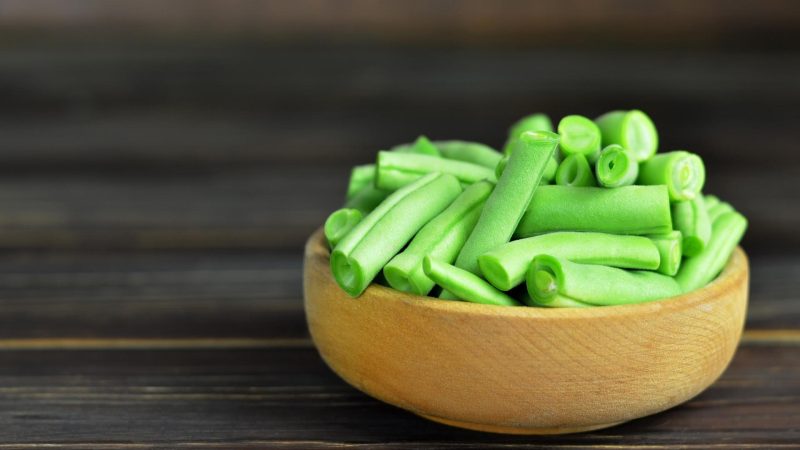
You may do the following to prepare green beans for your guinea pigs:
Step 1: Select the best guinea pig bean. For your guinea pig’s health, young, fresh green pods are the finest option.
Step 2: Thoroughly rinse the beans. Cleaning it will eliminate any chemicals or dangerous substances that may have become adhered to it.
Step 3: Trim the ends of the beans to remove any hard stem portions that are still connected to the bean. Serve the bean whole or cut it into smaller pieces before serving.
Step 4: Combine the beans with three or four different types of veggies. This way, your guinea pigs will get the most out of the vegetables.
Note: Throw away any leftover vegetables within a few hours. Bacteria can thrive on uneaten food, causing diseases to your guinea pigs.
More Information About Guinea Pigs and Green Beans
Can Guinea Pigs Eat Raw Green Beans?
Guinea pigs can eat raw green beans. This is good for guinea pigs since it provides all of the essential nutrients. It’s also simple for them to digest.
If you’re going to feed these green beans to your guinea pig, make sure they’re raw rather than cooked. Furthermore, never give your guinea pigs prepared or frozen food.
Can Guinea Pigs Eat Cooked Beans?
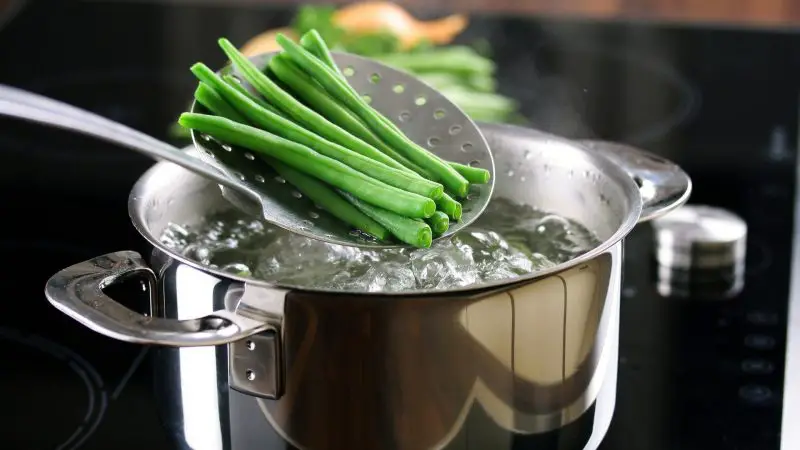
Guinea pigs cannot eat cooked green beans. Our guinea pig requires a lot of vitamins and minerals, which are lost when beans are cooked. Guinea pigs should never be given cooked food. Guinea pigs can only consume fresh, uncooked food. They have a delicate digestive system, and they are unable to digest all that a human body can.
Can Guinea Pigs Eat Green Beans Seeds?
To be safe, avoid giving your guinea pigs seeds. They can choke on seeds, especially if they aren’t delicate.
Only soft seeds, such as those found in cucumbers and tomatoes, are safe for your guinea pigs. Nevertheless, even when using peppers, always remove the seeds.
Can Guinea Pigs Eat Green Beans Leaves?
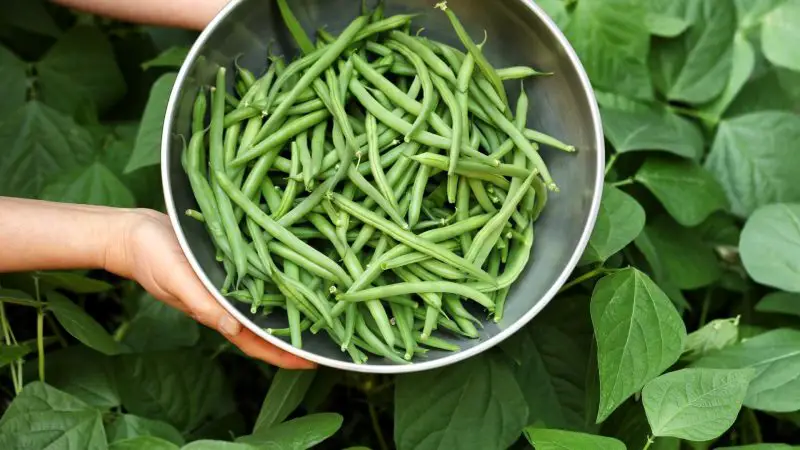
Green bean leaves are suitable for guinea pigs to consume. If you feed your guinea pigs in moderation, green beans are safe for them. Green bean leaves are tasty and may be added to your guinea pigs’ diet.
Can Guinea Pigs Eat Frozen Green Beans?
Green beans that have been frozen are not suitable for guinea pigs. It is also dangerous for guinea pigs to ingest commercially frozen food because it is prepared and pre-cooked. This type of food poses health dangers to them, thus it should be avoided.
Can Guinea Pigs Eat Canned Green Beans?
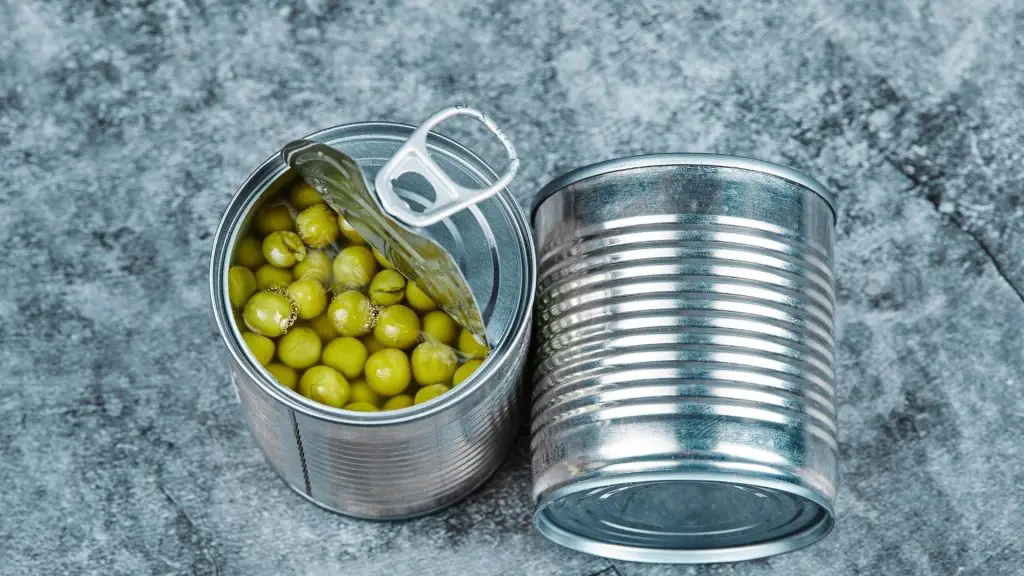
Canned green beans are toxic to guinea pigs. The green beans in a can always have some additives and this is not healthy for guinea pigs. Besides, these green beans are flaccid and even overcooked. They have no aroma and they are not good for you or the guinea pig as well.
Fun Facts on Green Beans
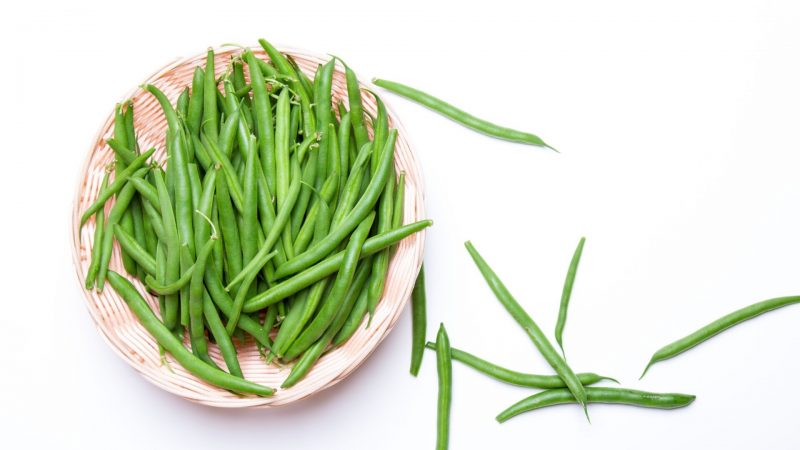
The following facts about green beans will amaze you:
- Green beans grow as a bush and this can reach a height of 20 inches.
- Leaves can be purple or green.
- Green beans also produce flowers, and they can be pink, white or purple.
- The pod is also edible and it can be yellow, purple, red, or green.
- The most known type of green beans is the string type, then the stringless type, and in the third place the runner beans.
- Humans must consume the green beans cooked but guinea pigs must consume them raw.
- If we consume raw green beans, we will ingest a lot of lectins and they can be harmful to us.
- China produces the largest percentage of green beans.
- The green bean leaves have small hairs on them and these are used as traps for bed bugs!
- The most popular dish with green beans is made for Thanksgiving in the USA. It is made with green beans, mushroom soup cream, and onions that are French fried.
- Often, green beans are sold fried with carrots, peas, corn, and veggie chips.
- There are over 130 varieties of green beans.
- Green beans originate from Peru but today they are grown everywhere in the world.
- People have cultivated green beans for 7000 years.
If you are not sure what to feed them but believe your little piggies deserve some great treats, check our Helpful Guide to the Best Guinea Pig Treats to get some ideas.
We have also made a full list of foods that guinea pigs can and can’t eat (150+ Types of Foods). Be sure to also check our recommended products page for everything you will ever need to assure a happy life for your guinea pigs. Hope this information was helpful and you have found the answer you were looking for.
